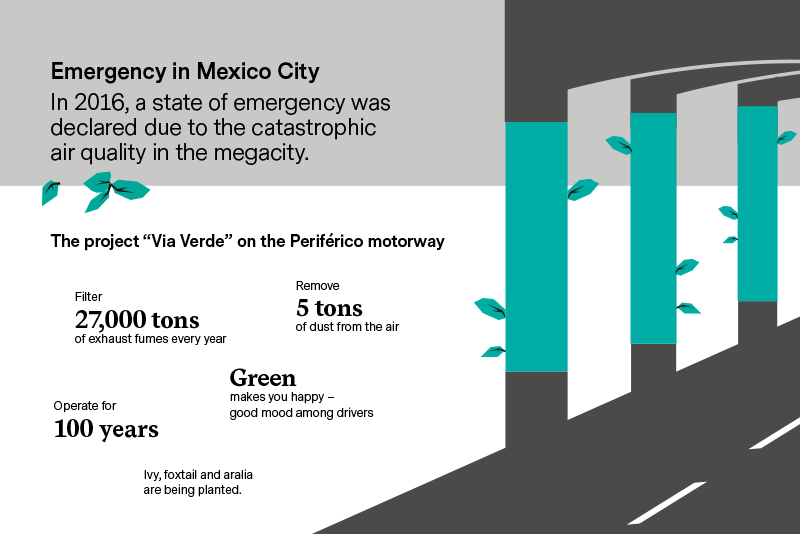Vertical instead of horizontal – the garden of the future
In metropolises like Mexico City or Tokyo, clean air is becoming a scarce commodity. Partly to blame is the loss of vegetation. Innovative concepts for vertical gardens find a remedy. These are often linked with social aspects.
The increasing population density increases the demand for living space. Satisfying this need generally goes hand in hand with intensive infrastructure development on available ground and results in an enormous loss of vegetation. This in turn has a negative effect on our standard of living, since plants are essential for our survival. Without their photosynthesis, there would be no oxygen left to breathe.
Nature as an example
In order to curb this development, architects and construction companies have started to test alternative options for revegetation. Vertical gardens are enjoying particular popularity. As the name suggests, these use the vertical in order to provide new space for nature.
These kinds of revegetation concepts are receiving a great deal of interest especially in mega-cities. For example in Mexico City. In the course of the “Via Verde” project, the concrete posts of the Periférico freeway were covered in felt matting and hung with plants. The aim of the project is to filter around 27,000 tons of exhaust emissions each year and to capture a good five tons of dust.

In the course of the “Via Verde” project in Mexico City, the concrete posts of the Periférico freeway were covered in felt matting and hung with plants.
Mexico City, the metropolis of millions, felt forced in 2016 to declare a state of emergency since the air quality had dropped to alarming levels. In response to this, Architect Fernando Ortiz Monasterio launched a community initiative to tackle the problem.
Trees for more social activity
The issue is also being addressed in Spain, and takes it one step further. In addition to revegetation of a boulevard, Madrid is striving to link sustainability with social aspects. A meeting place is to be created which is able to stimulate a lively interaction between the residents. The architects have implemented their idea in the form of Air Trees. It consists of metal frames, which can be walked on, which have been populated with plants on various platforms. In combination with a regulated air humidity, they are in a position to reduce the temperature of the opening in the center of the structure by up to ten degrees.
The development of innovative concepts continues
A showcase in Italy is following a slightly different approach. In Milan, as part of the “Bosco Verticale” project, a complete forest was planted on the balconies of two high-rise buildings at once. In all, a total of 20,000 shrubs and 800 trees have been supplying the residents of the buildings with a better microclimate since the completion of the build.
The described projects show how diverse vertical gardens can be. From the original idea of improving air quality, concepts have meanwhile been created which incorporate social factors and technologies to produce energy. Find out more about the subject in our video story on sustainable building and tropical mega-cities. Take a look now
Smart Farming: the future of farming
Farming has challenges to overcome. One approach to the solution is the use of information and communication technologies, as well as new production methods. This should help to shape sustainable productivity with efficient use of resources. The megatrend of intelligent agriculture is providing investors with interesting prospects – we estimate that the market will exhibit annual growth potential of 6 percent over the coming years. Find out more about the smart farming megatrend.
